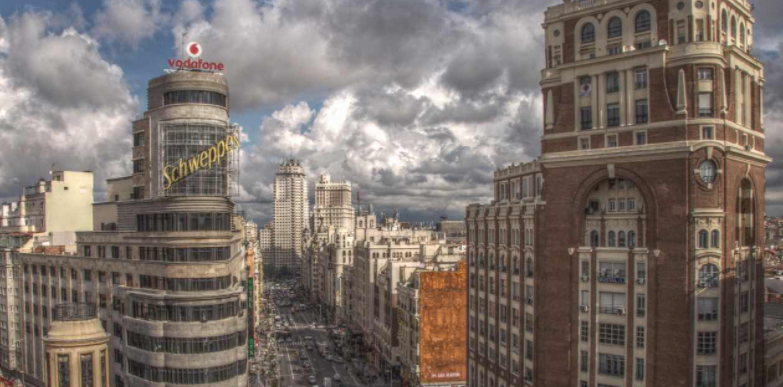
The Spanish capital of Madrid is taking climate change seriously. The government recently announced plans to combat their city’s ‘heat island’ by encircling themselves with greenery in the form of trees. The urban forest project involves planting nearly half a million trees on a 46-mile perimeter around the city. When the trees reach maturity, they should be able to absorb about 175,000 tons of Carbon Dioxide annually.
Some of the tree species that will be included in the Madrid ‘urban forest’ include those native to Spain and do not require a lot of water or specialized soil conditions. They are:
- Black pine,
- Spanish Juniper,
- And Various Oaks
What officials want to do, is “improve the air quality in the whole city, to fight the heat island effect,” and to “absorb the greenhouse emissions generate by the city” by connecting “all the existing forest masses” around Madrid as Mariano Fuentes, Madrid’s councilor for the environment and urban development, says.
Fuentes goes on to explain that Madrid is not the only location in the world to suffer from this problem. He encourages a ‘global effort’. Cities are responsible for the vast majority of all human-caused carbon dioxide. Yes, more so than their rural counterparts. They also absorb much more heat and have poorer air quality than the countryside. As a result, methods for combatting climate change and improving the environment, in general, need to be varied. This will help prohibit environmental degradation from occurring.
Environmental degradation, for those of you who are unfamiliar with the concept, is a process by which the natural environment is compromised in some way. Areas such as this see a reduction in biodiversity. The overall environmental health of these locations is compromised. The process of environmental degradation can completely natural. However, in the modern era, the issue seems to be more of a man-made one. This is not exactly surprising.
Fuentes says that the solution has to be global. As he puts it, “it’s not only about cars, but also a pedestrianization strategy, the creation of environmental corridors in every district” and, most of all, “to engage citizens in a new, green culture.” It is absolutely essential, in his opinion, for “every city to face the near future in the best conditions.”
The urban forest in Madrid is not a park. Fuentes and other local officials want to make that clear. That does not mean it isn’t ideal for Madrid’s nature lovers. It is meant to be a place of respite and shade. The urban forest will also provide birds with a habitable habitat (for lack of a better term). This ‘forest’ will work night and day to keep Madrid cleaner, clearer and cooler. Hopefully, other big cities will take it as an example and follow suit.
We really hope you enjoyed this article and encourage you to continue to read our blog. Each week we work hard to find you interesting and relevant information related to trees and the environment in general. We thank you for your readership. It is much appreciated.











